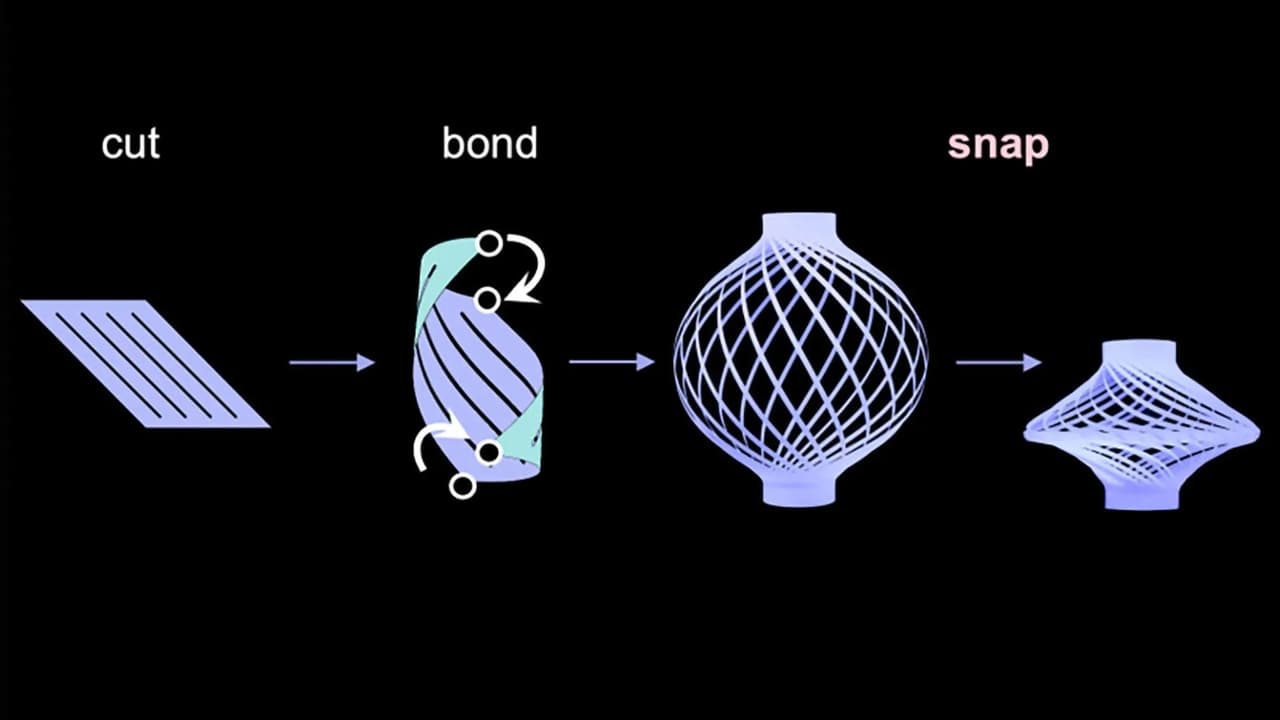Researchers at NC State develop a magnetic Chinese lantern that snaps into multiple shapes. This shape-shifting device, controlled remotely, could serve as grippers, filters, and components in robotics and adaptive mechanical systems.
Engineers at North Carolina State University have designed a polymer “Chinese lantern” capable of rapidly snapping into multiple stable 3D shapes. By adding a thin magnetic layer, the lantern can now be remotely controlled, opening exciting possibilities for soft robotics, adaptive devices, and novel mechanical systems.
From Flat Sheet to 3D Shape
The lantern starts as a thin polymer sheet cut into a diamond-shaped parallelogram. Rows of evenly spaced cuts through the center form parallel ribbons, connected by solid strips at the top and bottom. When the ends of these strips are joined, the sheet naturally folds into a round, lantern-like shape.
This structure is bistable, meaning it has two stable forms. Compressed from the top, the lantern slowly deforms until it snaps into a second shape resembling a spinning top, storing elastic energy that is released when it returns to its original form.
Multistable Shapes and Remote Control
By twisting or folding the strips in different ways, the lantern can take on more than a dozen distinct, multistable shapes, each with varying stored energy and mechanical properties. Adding a magnetic layer enables remote manipulation: researchers can twist or compress the structure without touching it.
This innovation allows the lanterns to act as gentle grippers, flow-control filters, or expandable mechanisms. For instance, one demonstration showed the lantern opening and closing underwater to control flow, while another illustrated a compact form that suddenly extends upward when activated.
Mathematical Modeling Guides Design
To predict and program the lantern’s behavior, the team developed a mathematical model linking the geometry of each angle to the final shape and stored elastic energy. This allows precise control over how stable each configuration is and how much kinetic energy is released during snapping, essential for designing practical applications.
Applications in Robotics and Metamaterials
“These lantern units can be assembled into larger 2D and 3D architectures,” explains Professor Jie Yin, corresponding author. This opens opportunities for shape-morphing mechanical metamaterials, soft robotics, and adaptive systems where energy-efficient, controllable transformations are needed.
The study, titled “Reprogrammable snapping morphogenesis in freestanding ribbon-cluster meta-units via stored elastic energy,” was published on October 10 in Nature Materials. Funding was provided by the National Science Foundation under grants 2005374, 2369274, and 2445551.
